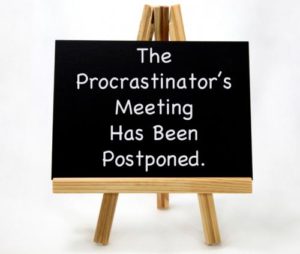Three Ways to Unplug and Get More Done
We all know the upsides to technology: greater connectivity, proven efficiency, powerful tools, and so much more. We depend on the latest innovations to make business and life easier, faster, and just plain better, but technology comes with a slippery slope. Without positive, proactive habits, technology has a way of consuming and controlling every minute of our lives. How can we be both productive and plugged-in?
Modern devices can hinder our daily performance, not to mention goal achievement and success overall. They affect how well we sleep and how effectively we engage with others. As a leader, it’s important to champion technology and support innovation, but you must also role model appropriate behaviors, maintain high connectivity with your colleagues and teams, and communicate — not just with language — when and how technology fits into the workplace. Challenging as it may be, temporarily “unplugging” may be exactly what you need to foster better focus, personally connect with others, hold effective discussions, and increase the efficiency of your team and their work towards company goals.Are you a little too plugged-in? Here’s how to cut back, and mentor your team into understanding that limiting tech-time makes everyone more productive.
End screen time early.
So many people are tired when they climb into bed — but once there, they stay up for hours streaming television shows, checking their email, surfing the web, or poring over social media. Studies show that exposure to screen light tricks our brain into releasing cortisol—a hormone linked to stress. Cortisol is a steroid hormone that is linked to anxiety, depression, and distress. It can lead to difficulty falling asleep and an uneasy REM cycle, preventing you from getting the rest you need to meet the challenges of the next day. I realize that disengaging from technology at night can be a hard habit to break, but think of the benefits! Turn off the screen and choose a replacement activity, such as a book, nightly meditation, soothing music, a hot bath, or other calming activities that give your brain the break it needs.Limit social media at work.
I’m willing to bet that you could probably spend an entire day looking at social media and chatting or emailing with friends. Right? Those distractions could derail your entire workday and seriously limit your ability to reach goals and meet deadlines. Thanks to modern technology, communication is available and at our fingertips — more so than ever before in history. Recognizing this, it’s important for leaders to set controls on how often they engage in outside email or social media when they’re supposed to be working. Equally important is noticing when work emails, texts, or messaging morphs into social conversations or other tangents that bump you off-track. Just like a verbal conversation with co-workers, you need to be able to notice when you’ve gone off course and the conversation is no longer productive. You can pull back from distractions! Discipline yourself to do it!Seek help if you need it.
In our modern world, Internet Addiction Disorder (IAD) and compulsive internet use are real barriers to performance and productivity for many people, including leaders. Are you finding it impossible to disconnect or disengage from technology? Constantly checking your accounts, counting how many “likes” you’ve gotten, or spending time at a screen instead of on vital responsibilities may be symptoms of internet addiction. Challenge yourself to spend one day unplugged — no extraneous (non-work) texts, emails, or social media. Do you think you can do it? If you can’t, I suggest that you seek strategies, support, advice, and resources to help you focus your life outside the screen.
What’s your biggest challenge with personally managing email, screen time, or social media?



